Podstrana (Croatia/ Hrvatska)
General information
Podstrana is a municipality in Split -Dalmatia county with population around 10,000 people. It is a series of small settlements located along the coast from "Bajnice", the westernmost village of the "parish of Jesenice" up to river "Zrnovnica", the western border of ancient "Republic of Poljica". Podstrana is located approximately 10 kilometres south from Split and 14 kilometres north from Omis. It is connected to both towns by regular bus lines. Podstrana consists of several settlements along the coast ("Mutogras", "Sveti Martin" (Saint Martin), "Grbavac", "Grljevac", "Miljevac", "Strozanac") and of the old settlement located under the hilltop "Perun", 200 metres above sea level, named "Gornja Podstrana" (Upper Podstrana). From this old settlement, which throughout its history was the part of the "Republic of Poljica", coastal settlements developed during 20th century, with the development of tourism and construction of the Adriatic highway. Agriculture is still today important part of local economy, mainly thanks to the production of vegetables in "Podstrana field", a large area of arable land located close to the sea which is very uncommon in this region, where mountains usually stretch directly to the sea. With the mild Mediterranean climate of coastal area and good quality of soil, the "Podstrana field" also bears fruit to some of the most delicious peaches, for which Podstrana is renowned.
History of Podstrana
According to the earliest historical sources, the first known inhabitants of Podstrana were the Illyrians, members of the tribes of "Dalmati". Archaeological remains of Greek settlement have been found at the bottom of the "Mutogras" hill. At the end of the 1st century BC the Romans founded one of the oldest settlement in this picturesque area called "Pituntium" from which the current name of Podstrana developed over centuries. Roman writer Pliny the Elder from the first century mentions a Roman settlement called "Pituntium" located in this area. The inhabitants lived mainly of income from the estate, from cultivation of vines, olive groves and orchards. The records of the nature and position of the main settlement "Pituntium" indicates the origin of the pre-Roman period. It is assumed that the settlement was located in the area of "Stara Podstrana" and was surrounded by dry stone walls made of large stone blocks. Remains of these stone blocks can be found today in the wall of the cemetery of the church of St. Martin in "Sveti Martin". One of the blocks in this wall is a roman headstone that belonged to Roman general Lucius Artorius Castus. Many historians think that there is enough proof that this is the tombstone of none other than legendary King Arthur himself. In this location in "Sveti Martin" there are many other interesting archaeological findings. Other interesting remains from the Roman period of the history of Podstrana are the ruins of Roman building in "Polača" and "Cindro" castle in "Strozanac"
Croats arrived to this area in early seventh century and have founded several settlements on the slopes under the mountain tops. The oldest settlement called "Gornja Vas", was established in the vicinity of the freshwater spring and the source of potable water. In "Sveti Martin" in the year 839, Croatian prince Mislav made peace with Pietro Tradonico, the Venetian doge - the Venetian navy was no longer allowed to freely sail the Adriatic sea. In eleventh century, together with neighbouring villages they founded the "Republic of Poljica", an autonomous community that was organised as a "peasants' republic", and it's best known for the "Poljica Statute" first written in 1440. The people of Podstrana feared and respected the Statute and its laws and relied on faith and God.
Summer holiday in Podstrana
With the development of tourism in Croatia, it slowly became the most important economic activity and source of income for the people of Podstrana. Podstrana bases is tourism on the well know hospitality of the local people, rich cultural and gastronomical heritage, natural beauty, mild climate, clean sea and endless sequence of beautiful pebble beaches. The proximity of the largest Dalmatian and second largest Croatian city, the city of Split surely played an important role in developing Podstrana into modern holiday resort. Split is the largest port and the most important transportation, cultural and socioeconomic hub on the eastern side of the Adriatic sea. Podstrana is situated just few kilometres east from Split, and with regular bus connections it became a suburb of Split.
Podstrana stretches along the Adriatic tourist highway, a two-lane road which connects it with other tourist centres on Croatian coast. Along the road there are numerous hotels, restaurants, private houses where it is possible to find excellent accommodation for reasonable price. And along the coast, there is several kilometres long sequence of white gravel beaches, with lots of shade and many beach bars that are situated along nice promenade. The eastern part of Podstrana, an area named "Mutogras" is very popular spot for windsurfing, and surfing equipment is available for rent on several spots in Podstrana. There are also many other possibilities for water sports, like renting sea-scooters, kayaks, diving and renting a boat to explore nearby islands. The western part of Podstrana is home to one of the best hotels in Croatia, "Le Meridien Lav" with many services that are open to public like open and closed pools, tennis courts, welness centre, conference centre, parking, marina, casino, restaurants, bars, playground for children etc.
Over the following centuries, the area associated with the name Croatia shifted gradually north and west as its territory was eroded, first with the loss of Dalmatia to Venice by 1420 and then as a result of Ottoman conquests in the 16th century. The Croatian nobility maintained their claims to lands occupied by the Ottomans, hoping to repossess them once liberated. A Croatian national tradition also survived within these territories, as well as in lands under Venetian rule. A broader Croatian ethnic identity would be further consolidated among the Catholics of Dalmatia and of Bosnia and Herzegovina during the nationalist movements of the 19th century.
The Austrian Habsburgs, elected to the throne of Croatia in 1527 after the death of King Louis II of Hungary at the Battle of Mohács, defended the “remnant of the remnants” of Croatia by establishing the Military Frontier (German: Militärgrenze; Serbo-Croatian: Vojna Krajina), a defensive zone along the border with the Ottoman-controlled lands. Because it was ruled directly by the Habsburg war council, the Military Frontier further reduced the amount of land under the control of Croatian nobles, the Sabor, and the ban. Furthermore, its military units and their land rights attracted not only some Croatian peasants but also a larger Orthodox inflow from the Ottoman-conquered territories.
Under the pressures caused by the Ottoman invasions and increased obligations to landlords, the position of the Croatian peasantry deteriorated, leading to a number of rebellions—most notably in 1573. The nobility, too, was under pressure from Habsburg absolutism. An anti-Habsburg conspiracy of Croatian and Hungarian nobles was unsuccessful, and its leaders, including Petar Zrinski, ban of Croatia, were executed in 1671. Their extensive properties in Croatia were confiscated by the Habsburg crown.
Ragusa and the Croat Renaissance in Dalmatia
The Adriatic port of Ragusa had been founded by Latinized colonists, but by the 14th century it had been largely Slavicized and had acquired its alternate name of Dubrovnik. The largely Croat republic of Ragusa maintained a precarious autonomy under the suzerainty of Venice, Hungary, and (after 1397) the Ottoman Empire. Its wealth as a trading power was based on its role as an intermediary between East and West, and it nurtured a flourishing cultural life. In the 16th and 17th centuries, Ragusa and other Dalmatian cities under the rule of Venice became the centre of the Croat Renaissance, which produced, in addition to works of art and science, an extensive and powerful literature that had a lasting influence on the development of the Croatian literary language. As a mercantile power, however, Ragusa eventually entered a decline parallel to that of Venice, so that by the 18th century it had become little more than an economic backwater. Ragusa retained its autonomy as a city-state until 1806, when it was occupied by Napoleon I’s armies. During the French occupation of all of Dalmatia, which lasted until 1813, the region was designated as part of the Illyrian Provinces, where education and publications in South Slav languages were allowed.
The first recorded inhabitants of Dalmatia were Illyrians (the name Dalmatia probably comes from the name of an Illyrian tribe, the Delmata, an Indo-European people who overran the northwestern part of the Balkan Peninsula beginning about 1000 BCE). The Greeks began to settle there from the 4th century, founding a number of colonies on the islands, the most famous of which were Issa (Vis), Pharos (Hvar), and Corcyra Melaina (Korčula), and a few towns on the mainland coast, one of which is Salona (Solin), near modern Split. The Greeks, opposed by the Illyrians, appealed to the Romans for help, and a long series of Roman-Illyrian wars began in 229. The fall of the Dalmatian capital, Delminium, in 155 brought Roman civilization to the country. On the collapse of the Western Roman Empire, Dalmatia fell under the power of Odoacer in 481 CE and later under that of Theodoric, to become a battlefield during the wars between the Goths and the Byzantine emperor Justinian I.
A DREAM
My mother's hand, like a white sail, a wing of a tender oriole.
Do you remember a fairy tale about a golden apple, a moonlight's rainbow?
On a swing branch transparent to the (point of) snow, soft to the (point of) sorrow,
my eyes weave silent conversations, long lullabies.
Wells filled with heavy water travel into an unknown harbor.
My mother's song, a white daisy, is guiding me by the hand.
SAN
Ruka moje majke kao jedro bijelo, krilo blage vuge.
Sjećaš li se bajke o jabuci zlatnoj, mjesečeve duge?
Na ljuljački grani prozirnoj do snijega, mekanoj do tuge,
oči moje predu razgovore tihe, uspavanke duge.
Putuju bunari puni teške vode u neznanu luku.
Pjesma moje majke, ivančica bijela, vodi me za ruku.
THREE ISLANDS
There are three islands in the midst of this sea, one more rocky than another,
one more passionate than another in cricket song and pine soughing.
The first one is a snake curled into a bowl, the second a shiny sword unsheathed from scabbard,
The third one is an open dead man treasure chest rocking on the waves.
All three cursed. All three blessed.
All three abundant in deep caves, gravel and rocky capes-
Ancient treasures of experience in tired stones, that no one still
has solved the destiny of.
All three have bitten into my soul with its stone teeth!
All three have whipped me with salt, wounded me with green rosemary.
The first is known for angry battles and red wine tanks.
The second for the sunny vastness of winter where dolphins play.
The third one, chained in white marble, grows wild sheep and trembles before death.
There are three islands in the middle of this sea. One more cursed than another,
one from another more passionate in cricket song and pine soughing.
TRI OTOKA
Tri su otoka nasred ovog mora, jedan od drugog vrletniji,
jedan od drugog pjesmom cvrčaka strasniji, šumorom borja.
Prvi je zmija u klupko savijena, drugi je sjajni mač iz korica isukan,
treći otvorena škrinja mrtvačka što ziblje se povrh valova.
Sva tri ukleta. Sva tri blagoslovljena.
Sva tri krcata dubokih špilja i šljunka, rtova stjenovitih.
Drevne riznice iskustva u umornom kamenju, koje još nitko
ne odgonetnu kob.
Sva tri su zagrizla kamenim zubima u moje srce!
Sva tri su me solju išibala, zelenim ružmarinom izranila.
Prvi je znan po ljutim bitkama i crvenim badnjevima vinskim.
Drugi po sunčanim bespućima zime na kojima se igraju
delfini.
Treći, mramorom bijelim okovan, pase divlje ovce i pred
smrću strahuje.
Tri su otoka nasred ovog mora. Jedan od drugog ukletiji,
jedan od drugog pjesmom cvrčaka strasniji, šumorom borja.
vȑlētan prid. 〈odr. -tnī〉 Definicija: koji je pun vrleti; neprohodan, strm
The evening hid me in the moonlight,
having extinguished the candles.
All night I dreamed pondering
in an azure forest through the trees.
I was a berry of a ripe grape
in the teeth during kisses
a fox escaped from a trap
a boy that throws exclamations from a slingshot;
and a bite from a song mid forehead,
colourful cat in the basket of the game.
What I wasn’t, what I couldn’t have done,
a fish’s mirror in the pupil of an otter!
BILA SAM DJEČAK
U mjesečinu me sakrila
večer, utrnuvši svijeće.
Svu noć sam zamišljena snila
u modroj šumi kroz drveće.
Bila sam zrno rumena grožđa
u zubima sred poljubaca
lisica utekla iz gvožđa
dječak, što praćkom poklike baca;
i ujed pjesme nasred čela
šarena mačka u košari igre.
Šta nisam bila, šta nisam smjela,
zrcalo ribe u zjenici vidre!







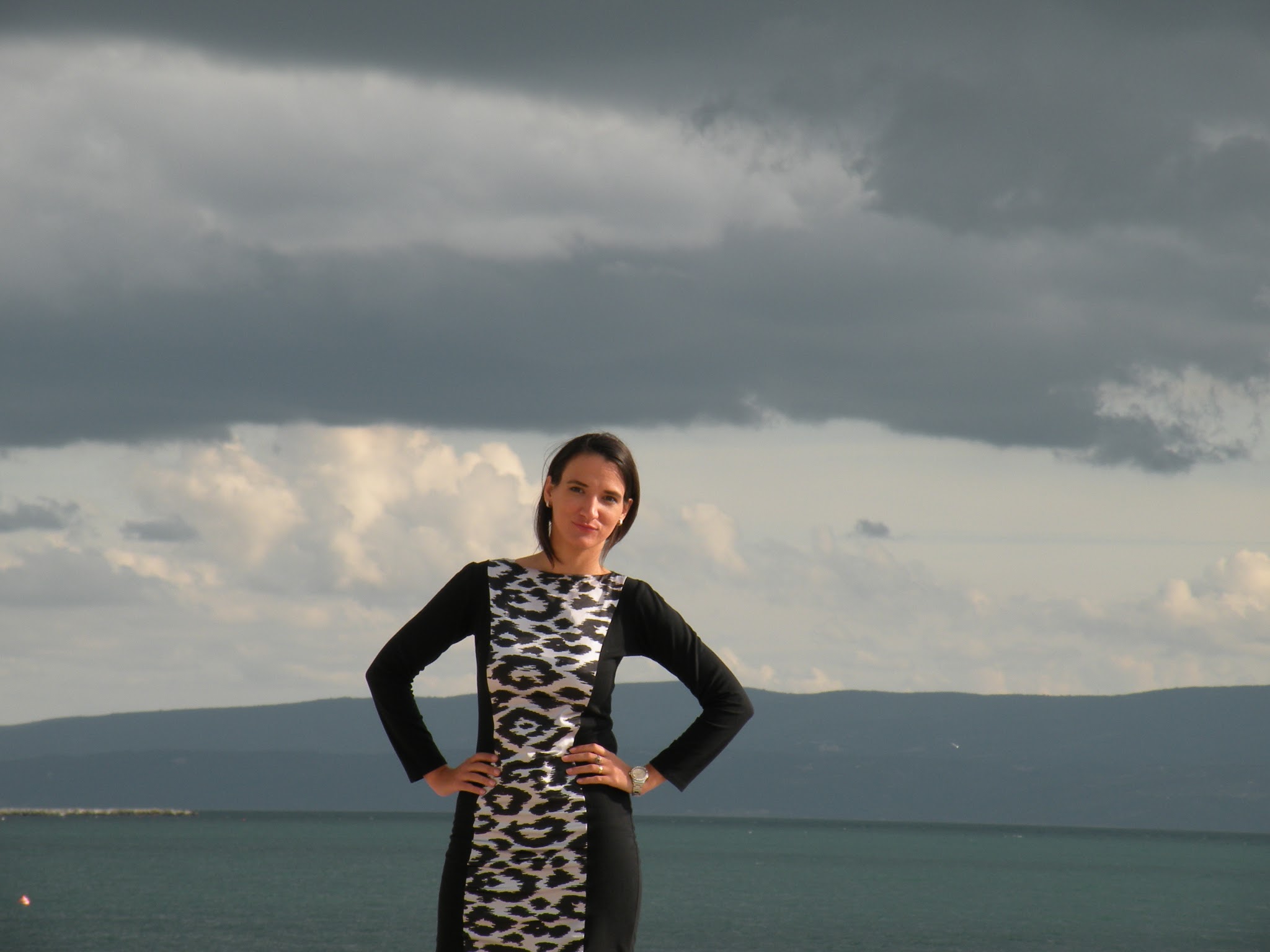


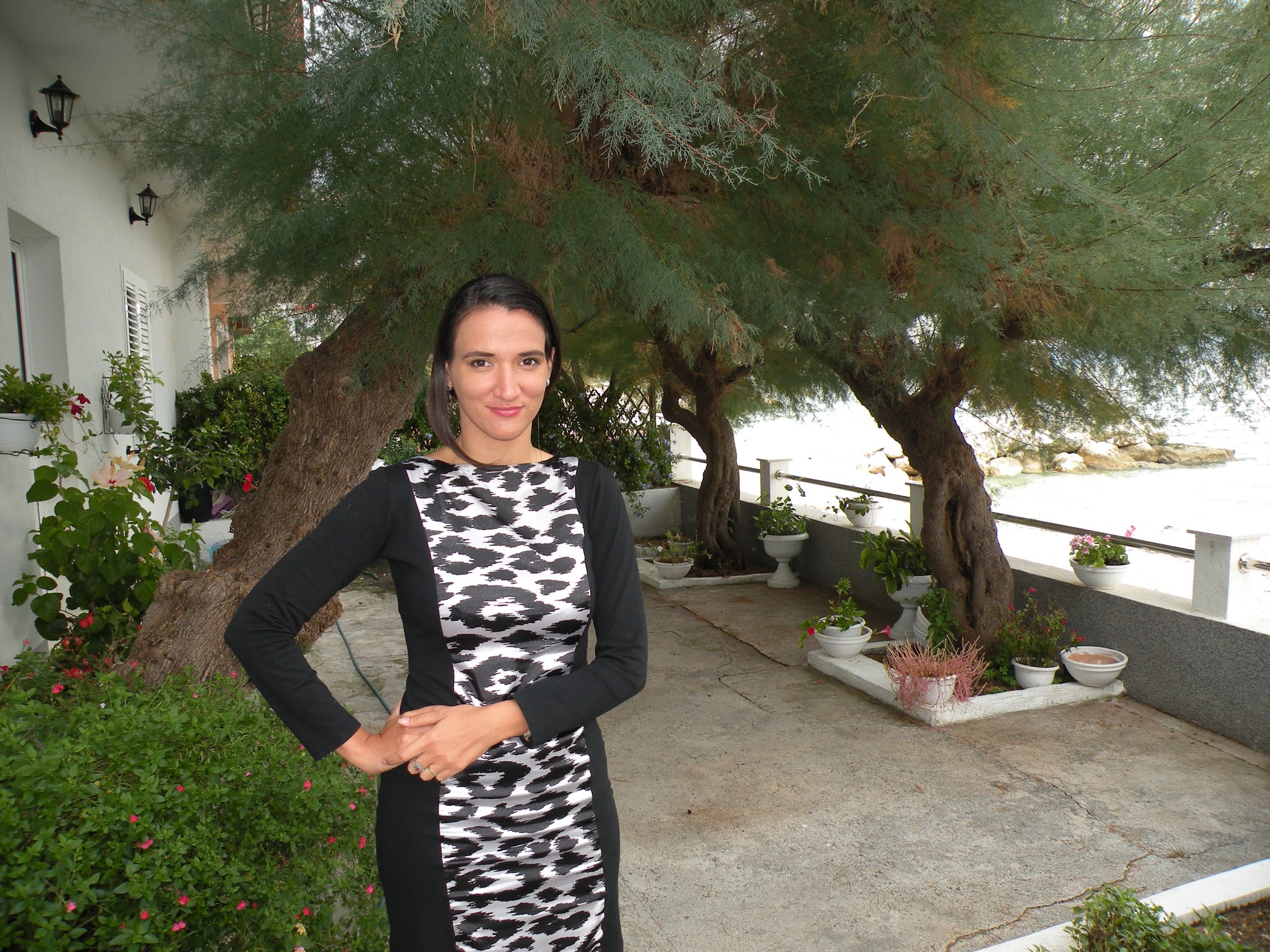






















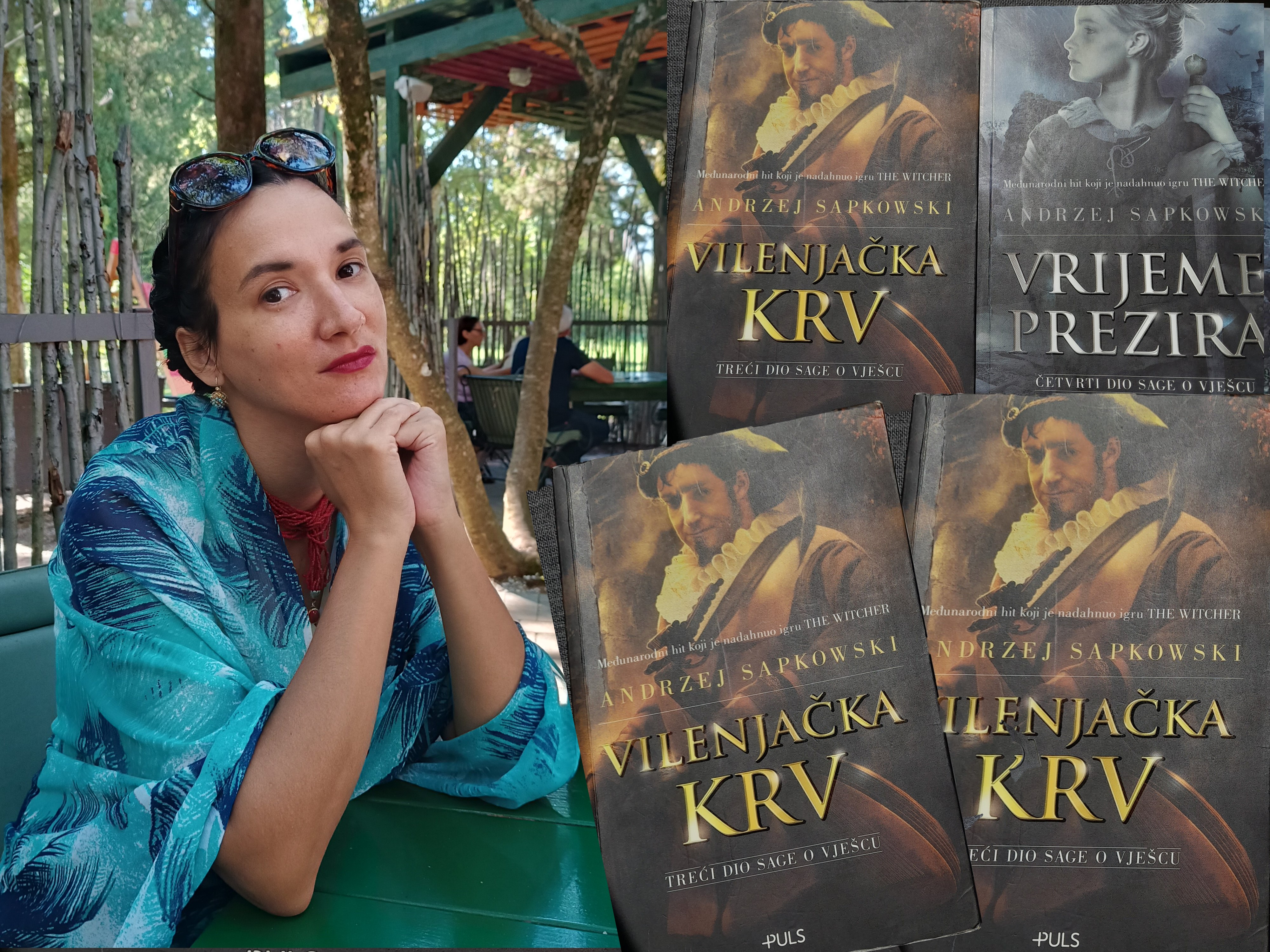





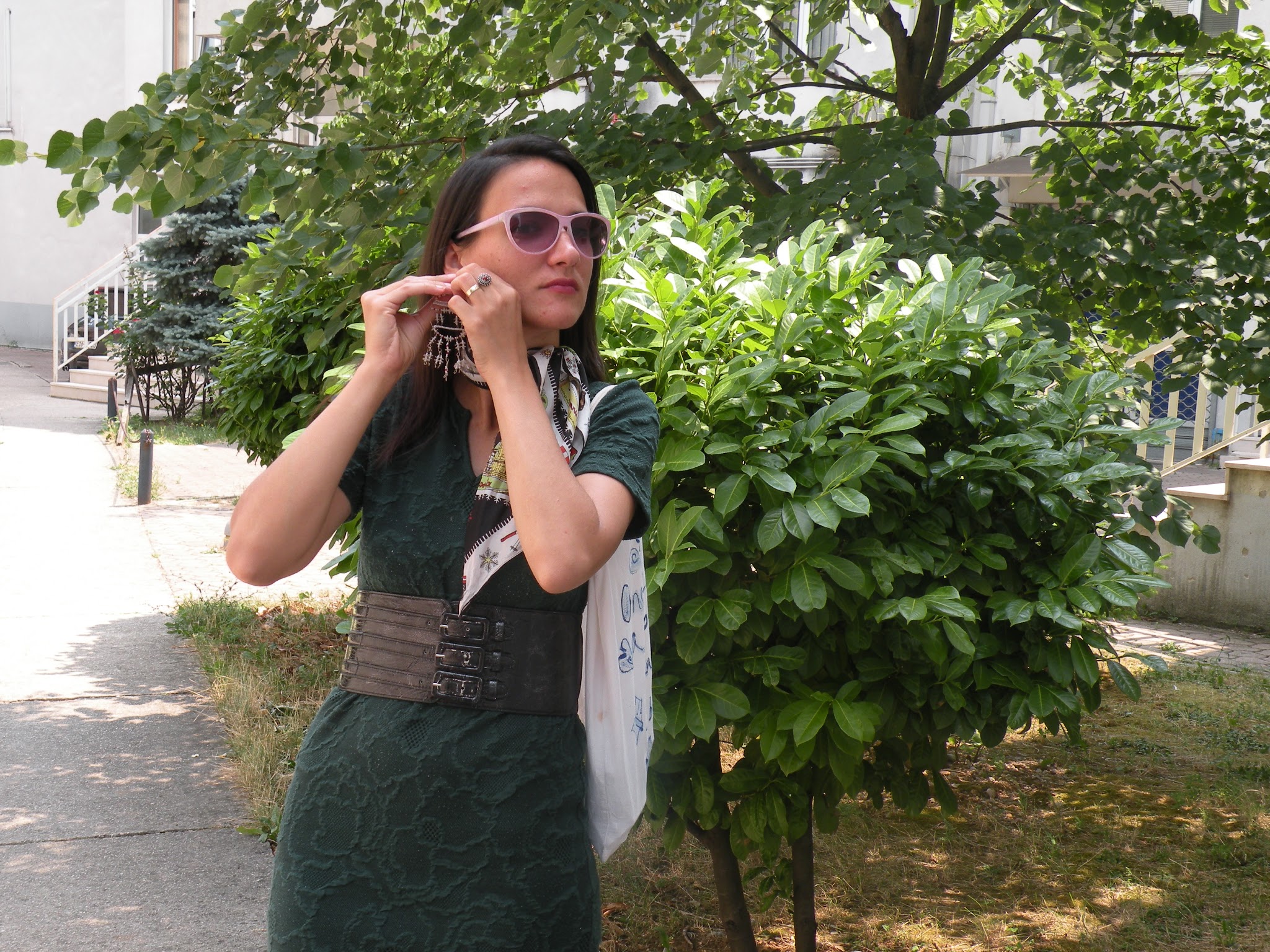

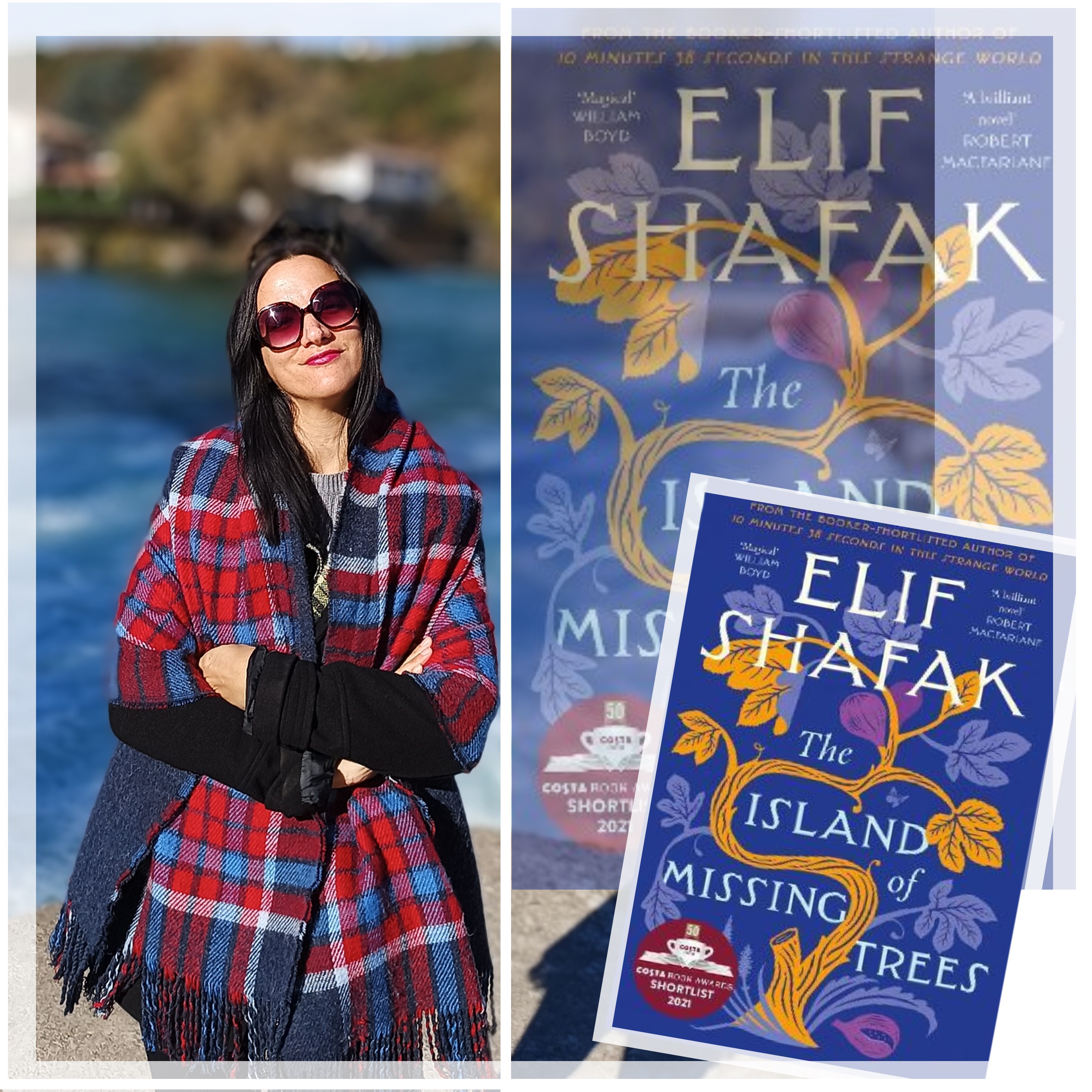
Thank you, Ivana, for so many beautiful photos! Amazing!
ReplyDeletethank you for commenting:)
DeleteWhen you smile you look like a goddess !!! Beautiful pictures :-)
ReplyDeletesuch a sweet compliment!
DeleteVery beautiful place! Sky looks amazing))
ReplyDeleteThanks for sharing!
pinkrabbitbeauty.blogspot.com
<3
DeleteKoja divota! :) Pa samo priroda može da stvori ovako nešto :) Zna se već da su oblaci poželjni na fotografijama ali ovako nešto je pravo savršenstvo! Posebno mi je prva slika lepa, možda jedna od meni najdražih otkad te znam. Predivno izgledaš i nekako blistaš :) Haljinica je takođe prelepa...
ReplyDeletehvala ti puno:) Slavili smo krštenje, a ja sam bila kuma, pa možda zato blistanje.
DeleteWhat a beautiful printed dress! The backdrop is lovely with the storm clouds over the sea too! :)
ReplyDeleteAway From The Blue Blog
bardzo ładna sukienka, wyglądasz bardzo elegancko! :)
ReplyDeletehttp://lamodalena.blogspot.com/
<3
DeleteNe znam jesi ljepsa ti ili mjesto gdje se fotografiras... Savrsenstvo
ReplyDeletetajfunblog.blogspot.hr/?m=1
hvala
DeleteDo I love this look? YES!!!! You look stunning, Ivana. Totally crushing on your look.
ReplyDeletehugs
Lenya
FashionDreams&Lifestyle
thanks Lenya
DeleteSuch a pretty dress
ReplyDeleteIt suits you well
The Bandwagon Chic | Instagram | Bloglovin | Snapchat: bandwagonchic
Cute dress... lovely photos!!
ReplyDelete♥
Amber
All the Cute
Latest Post: Clip-In Hair Extensions With Irresistible Me
thank you Amber.
DeleteKako ja volim ove tvoje zanimljive crtice o povijesti mjesta koje posjetiš! A slike su čarobne, nema druge riječi za opisati ove boje neba i mora..
ReplyDeleteNema te haljine koja tebi ne stoji kao salivena :)
volim ponešto napisati o mjestu gdje sam, nekako bi mi bilo čudno da ne spomenem i to.
DeleteYou look amazing dear!
ReplyDeletePlease click on the link on my post
http://helderschicplace.blogspot.com/2015/10/autumn-is-officially-here.html
<3
DeleteBeautiful photos Ivana! This dress is gorgeous and looks great on you!:)
ReplyDeletexxM
http://sunstreetbymonica.blogspot.com
<3
DeleteI love your outfit and the scenery is very beautiful.
ReplyDeleteBeautetude
<3
DeleteThis dress is absolutely stunning!!! *-*
ReplyDeleteGreat photos dear, you're so gorgeous! ^-^
xoxo
www.milleunrossetto.blogspot.it
grazie
DeleteGreat pics
ReplyDeleteNew post :
Www.miharujulie.com
Great pics
ReplyDeleteNew post :
Www.miharujulie.com
Great pics
ReplyDeleteNew post :
Www.miharujulie.com
I totally enjoyed this post! Happy Wednesday dear! :)
ReplyDeletexoxo;
STYLEFORMANKIND.COM
Facebook
Instagram
Bloglovin
<3
DeleteIl mare con il cielo nuvoloso è sempre affascinante! Hai scattato delle bellissime foto Ivana!
ReplyDeleteE come stai bene con quell'abitino, hai una linea perfetta! :)
Baci!
S
http://s-fashion-avenue.blogspot.it
grazie
DeleteIvana!!! These pictures are amazing, you're against storm clouds is something wonderful !!! Gorgeous place :) Is this charming gentleman is your husband? You look great, as always, your positive energy infects people, me too <3 Thank you for your this my sweet dear friend <3
ReplyDeleteHope you have beautiful time !!!
kisses
Joanna
thank you Joanna
Deleteyes, it is my dear husband.
DeleteDraga Ivana!
ReplyDeletePodstrana je lijepo mjesto. Šteta što nije imala lijepo vrijeme. Ti izgledaš opet vrlo vrlo lijepa.
Pozdrav iz Njemačka.
Carolin
meni se ovakvo vrijeme zapravo sviđa.
Deletewow, so beautiful my dear! love this photos :D
ReplyDeleteAjme što ja volim more pred neveru, prekriveno teškim oblacima :) Odlično ti stoji ova haljinica, baš je pun pogodak!
ReplyDeleteti si to more pred neveru odlično uhvatila na svojim fotografijama. Hvala ti, draga mi je ova haljinica jer je dar od dragog.
DeleteLovely fotos! the dress is so cute. You look fab Ivana :) kisses
ReplyDeleteReally nice pics!!!
ReplyDeletehttp://itzytrendy.blogspot.mx/2015/10/red-one.html
Wonderful photos with a spectacular sky and stormy shades -- your dress is also great with the high neckline. <3
ReplyDeleteInternational Foodie Files
Loving the view! I love Croatia!!
ReplyDeleteGorgeous look!
Dora
www.BangsBang.com
thanks:)
DeleteLovely dress!!!
ReplyDeleteChiara
http://shesinfashionblog.com
Awesome photos, love the dress, you look really great :)
ReplyDeletehttp://dreamland1234.blogspot.si/
<3
DeleteSei splendida Ivana, stai benissimo e che luogo meraviglioso!! Baci, Coco et La vie en rose fashion blog - Valeria Arizzi
ReplyDeletegrazie
DeleteWow, Ivana, I'm impressed (and amazed!) by the scenery of your photos, you captured great moment, when rainy clouds are fighting with the sun, I have no doubts why painters were so crazy about views such like these ones, because they're breathtaking! What's more, you look very beautiful and feminine in this dress, dear friend :) Hope you had great day :)
ReplyDeletehttp://crafty-zone.blogspot.com/
thank you dear:)
DeletePrelijepe fotografije. Da li zelis da pratimo jedna drugu? :) Ako zelis obavijesti me u komentar od nekih mojih postova. Mozes me pratiti i na instagramu i G+. Uzvracam :)
ReplyDeletehttp://facetiouslywind.blogspot.com/
https://instagram.com/_menniina_/
zašto ne?:)
DeleteSuch an adorable photos and cute dress! ^^
ReplyDeleteWould you like to follow each others? Let me know on my blog
Keep in touch
xoxo
http://villenoireblog.blogspot.com.es/
I will.
DeleteA beautifully dramatic coastline and sky, and your dramatic monochrome and print dress matches it to perfection! xxx
ReplyDeletethank you dear....<3
DeleteYou are so pretty! Beautiful pictures dear:)
ReplyDeletekisses
http://irreplaceable-fashion.blogspot.com/
<3
DeleteI can understand why this place is popular with tourists, the views are incredible from there - look at that dreamy sky! I love this dress on you by the way, it's so flattering :) Have a wonderful week...
ReplyDeleteGabrielle | A Glass Of Ice
x
thanks Gabrielle<3
DeleteI love your blog and style! Perfect for fall! xo
ReplyDeleteLove,
Bri
www.cityfashiongirl.com
www.youtube.com/briannadeg
Follow Me On Bloglovin!
<3
DeleteThis is a beautiful place, thank you for sharing the photos here! And your dress is lovely :-). x
ReplyDelete<3
DeleteBonitas fotografías, el vestido es precioso y te sienta muy bien. Besos
ReplyDeleteIndeed a wonderful spot for artists, for dreamers of any sort, to come for inspiration. As much as I try and drag my heart to my everyday reality, it stays in a place very similar to that here. I only wish I got to visit it more often. Very lovely dress and beautiful you.
ReplyDeleteAll Things Bright and Lovely
it is a great place to look for inspiration indeed....but I also believe that inspiration is everywhere.
DeleteElegantissima in B&W e la luce di queste foto è splendida!!!!
ReplyDeletexo Paola
Expressyourself
My Facebook
grazie
DeleteFotografije su stvarno divne. JAKO volim to vrijeme prije nevere na moru. Onaj miris kiše koja samo da ne padne... nema ljepšega! Tada je more najljepše.
ReplyDeleteVolim ove tvoje cipelice, imaju mi neku vintage vibru... baš su lijepe! :)
hvala ti...i ja volim ove cipelice iz istog razloga, a jako su i udobne.
Deletemi piace moltissimo il vestito
ReplyDeletehttp://bellodiesseredonna.blogspot.it/
Love how flattering the monochrome dress looks on you! Beautiful design!
ReplyDeletePrudence
www.prudencepetitestyle.com
thanks
DeleteIt really seems a very pretty place! Your dress fits you very well! xo,
ReplyDeletehttp://cocojeans.blogspot.pt
<3
DeleteStunning dress and place Ivana! You look amazing!
ReplyDelete♥♥♥
Jeanne
http://fashionmusingsdiary.com
<3
DeleteWow, what a magical place! Stunning photos, thank you for sharing <3
ReplyDeleteKay
http://shoesandglitter.blogspot.co.uk/
thanks Kay
DeleteLook e imagens encantadoras amei
ReplyDeleteCanal:https://www.youtube.com/watch?v=EgeQXJjUpSQ
Blog: http://arrasandonobatomvermelho.blogspot.com.br/
Love this dress! Sheath dresses are just perfect :) Sadly, it looks much warmer there than in Berlin...
ReplyDeleteChristina ♥ https://caliope.name
<3
DeleteYou look gorgeous in this dress and this place is really beautiful!
ReplyDeletejointyicroissanty
<3
DeleteIvana sei bellissima, davvero stupendo quest'abito
ReplyDeletebuon mercoledì
un bacione
tr3ndygirl fashion blog
grazie
Deletegrazie
DeleteWow! So elegant. You are so inspiring. Make me want to travel :)
ReplyDeleteCheck my new post:
http://www.lauramacij.com/2015/10/equestrian.html
<3
DeleteYou look amazing as always Ivana <3 I love your gorgeous dress and the views behind you are breathtaking <3
ReplyDeleteSerene | I Am Serene L
<3
DeleteLovely place and chic look!!
ReplyDeletexx
Mónica Sors
MES VOYAGES À PARIS
FLARED JEANS AND FRINGES JACKET IN BARCELONA!
<3
Deletewow! You are so chic in these pics!
ReplyDeleteand I do love your monotone style!
http://fetish-tokyo.blogspot.com/
<3
DeleteBeautiful pics<3
ReplyDeletehttp://livinlikeaileen.blogspot.com/
<3
DeleteStai benissimo con questo vestito e mi piace anche come hai raccolto i capelli!
ReplyDeleteCambio di stagione in 5 passi su
lb-lc fashion and lifestyle blog
Bloglovin'
grazie
DeleteJoš jedna u nizu divnih haljina, a ti si mi pre, prekrasna. <3 Nikada ne skrivaj taj svoj osmijeh. :)
ReplyDeleteFotografije za desetku, slažem se s curama, ima nešto u tom periodu pred nevrijeme, ako si negdje uz more.
hvala ti<3 slažem se...more i nevera su posebna čarolija:)
DeleteGeorgeous Look, georgeous place and georgeous Pictures, dear Ivana! I love your beautiful dress and how it fits to your dark hair, blick tights and shoes! Once again, you look adorable!
ReplyDeleteThank you so much for your lovely comments on my blog!
Kisses,
Nadine
http://nadinecd.blogspot.co.at
Nice place and adorable dress!
ReplyDeleteBellissimo look e bellissime foto!!
ReplyDeletegrazie
DeleteAbsolutely stunning photography!
ReplyDeleteEdita
http://www.pret-a-reporter.co.uk/
<3
DeleteYou look so pretty and your outfit is lovely! Podstrana looks really nice! :) xx
ReplyDeletethank you<3
DeleteElegant and beautiful place!
ReplyDeletehttp://heyimwiththeband.blogspot.com/
thank you
DeleteAnother beautiful place! :)
ReplyDeleteAnd another lovely outfit! And you travelling in heels! You're my great example! :)
YouTube | Blog: Geekette in High Heels | Instagram
thank you Natassia.
DeleteThis comment has been removed by the author.
ReplyDeleteThe first photo is very beautiful! I love this dress!
ReplyDeleteARedLip&Love
Happy hump day, Ivana.
ReplyDeletexox
Lenya
FashionDreams&Lifestyle
<3
DeletePodstrana is very cute place! So amazing photos :) Ivana, this dress perfectly skims your figure, and the color is very nice on you as well
ReplyDeletehttp://fairyland111.blogspot.com/
yes, it is a lovely place.
DeleteDear Ivana, I loved it to scroll through this beautiful pictures, you look amazing on them and I really love the mood your talented photographer caught on the pictures! You look wonderful, this leo dress suits you so well and I like it how you wear it your hair here. And the pink coat with the fur scarf is also so cute.
ReplyDeletePodstrana must be fascinating and only during I watched the pictures I came to the conclusion that it must be amazing there. I understand the people who like this place so much! Thanks for your additional explanations and have a happy rest of the week.
xx from Bavaria/Germany, Rena
www.dressedwithsoul.com
have a great week too!
DeleteEl vestido te queda genial...las fotos divinas todas!
ReplyDeleteBesos!!
Gosh, what a gorgeous place and how I wish we win the lotto and could afford a house overlooking the ocean, that would be a dream come true. I love the first picture of you, Ivana, you's such a stunning beauty. xx
ReplyDeleteShireen | Reflection of Sanity
if I won a lotto, that would be my first move as well:)
DeleteImmagini favolose e look strepitoso un bacione
ReplyDeletehttp://denimakeup95.blogspot.it/
baci
DeleteThere is a breathtaking serenity about this place. I love its cleaness, the brooding skies and of course, the beautiful model! You do look lovely in this outfit!
ReplyDeleteGreat to see Mr Ivana too!x
I like it when mr. Ivana makes an appearance too:)
DeleteI really enjoy learning and seeing more of Croatia through your posts. I think Dalmatia has to be one of the most picturesque locales you have shared and you look beautiful in these photos as well.
ReplyDeleteRowena @ rolala loves
Dalmatia is wonderful, but the rest of Croatia has a lot to offer as well....However, since I'm Dalmatian, I must be a bit partial.
DeleteBas ste mi lepi! A slike su profi! Volim ovo mesto, pravo je za uzivanje u romantici. Leopard uzorak je sjajan na haljini, a ona bas efektna na tebi <3
ReplyDeleteThat dress, girl.... WOW! You look stunning!
ReplyDeleteBeautiful photos of a beautiful country. I love Croatia even though I don't have very pleasant personal memories connected with it but I think the country is just so so beautiful <3
xox Nadia
http://mielandmint.blogspot.co.uk/
I'm a lover of the sea though I can't properly swim. Admiring how beautiful you captured the sky and the sea together, Ivana! Incredible nature there and perfect location to shoot your black and white dress - so chic!!!
ReplyDeletexoxo Ira
JOURNAL OF STYLE / BLOGLOVIN
<3
DeleteAmazing. This place looks so heavenly, and you look like a model on a postcard! I like your outfit too. Your dress brings out your lovely silhouette :)
ReplyDeletethank you very much!
DeleteHello Ivana,
ReplyDeletegosh, what a beautiful post!!! I love this location were these photos are taken. This is such a wonderful place - i just can say: hello holiday...;-)
Your outfit looks stunning as well. Another great looking dress on you. These little black/white "playing thing" is just simple, but have such a big statement! This front print is also nice.
But my fav pic no.1 is absolutely your last image: this sunset looks amazing with you in the front, looking a little bit shy - i love that pose a lot.
Bye.
Jennifer
thank you Jennifer...you are very sweet.
DeleteThis dress is just perfect ! You are gorgeous ;)
ReplyDelete<3
DeleteWonderful photos, the first is my favorite, luminous and happy!
ReplyDeleteThe dress looks great on you and the place is outstanding. I would love to travel out there.
thank you Mihaela
Delete